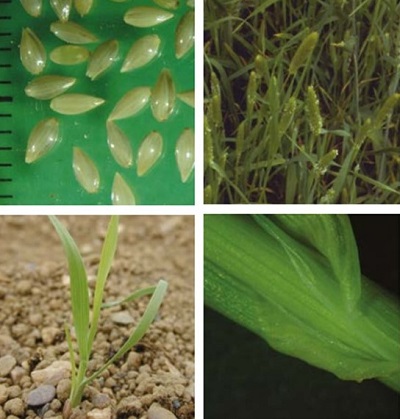- Home
- Knowledge library
- Distribution and biology of awned canary grass in the UK
Distribution and biology of awned canary grass in the UK
Awned canary grass is currently uncommon but is an increasing weed problem in cereal crops. Find out how to identify and control it.
Overview
Awned canary-grass (Phalaris paradoxa) is an annual grass which only reproduces by seed. Although it is uncommon, it is an increasing problem. It is generally found in the same areas as black-grass, in moisture-retentive soils. It is competitive with cereal crops.
It spreads initially from volunteers of previous bird-seed crops. It is difficult to control with the usual grass herbicides and can be a serious weed in winter crops.
- It is particularly competitive in winter wheat
- It has value to biodiversity
Description
It is a tufted annual grass up to 1m tall, freely tillering, with long tapering leaves and a long pointed ligule. The flowerheads are upright, broad and densely packed with spikelets which have green and white striped markings.
Key features
Flowers/fruit: The flowerheads fall intact when ripe.

Location and life cycle

Geographic distribution
Awned canary-grass is a lowland weed, especially in south Britain.
Soil type
It likes moisture-retentive soils.
Seed statistics
- Seed weight: 1.25 mg
Management
Seeds may be buried by deep ploughing, and leaving in the seedbank for 2–3 years.
For advice on herbicides, please speak with your agronomist or adviser.
When was this information last updated?
This page is based on content from the encyclopaedia of arable weeds publication. Since it was first released in 2008, the publication has been redesigned several times but not revised. However, it remains a good foundation for general information on the distribution and biology of weeds.

